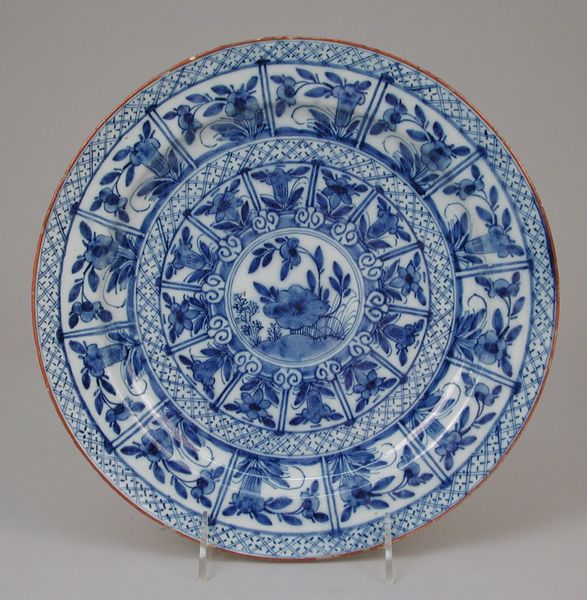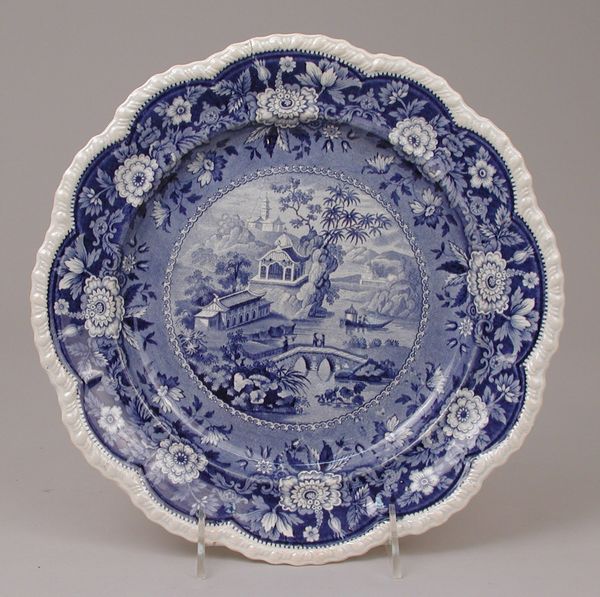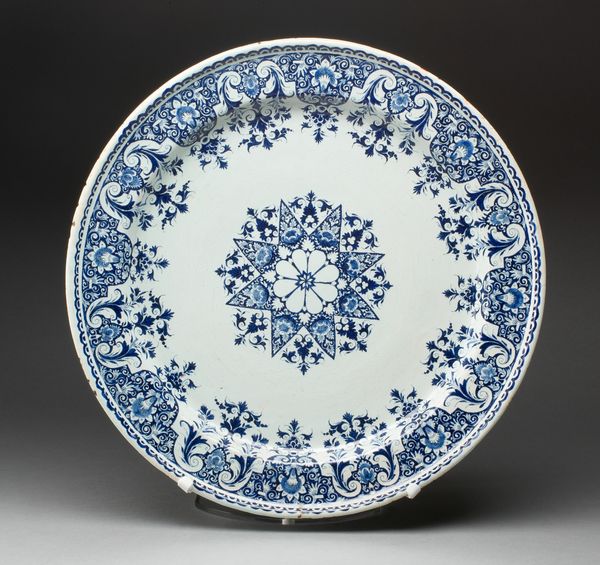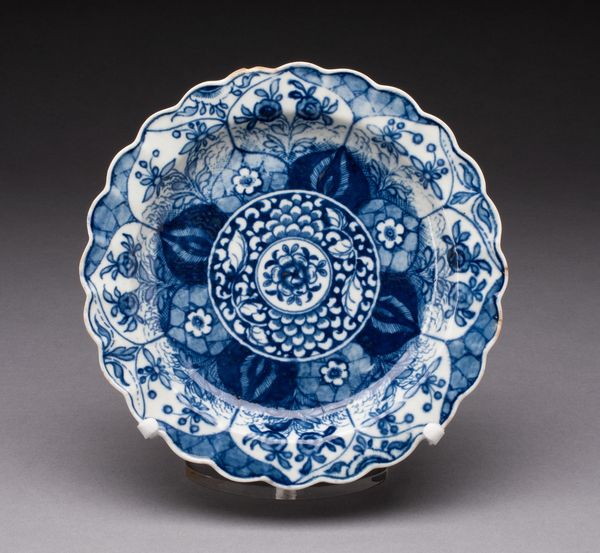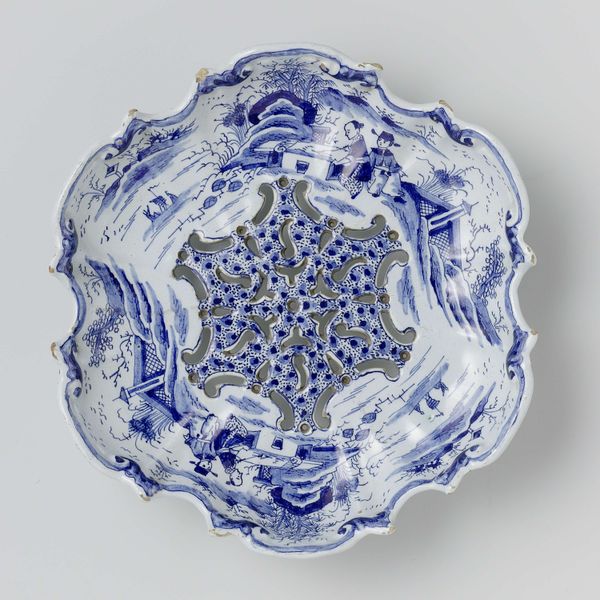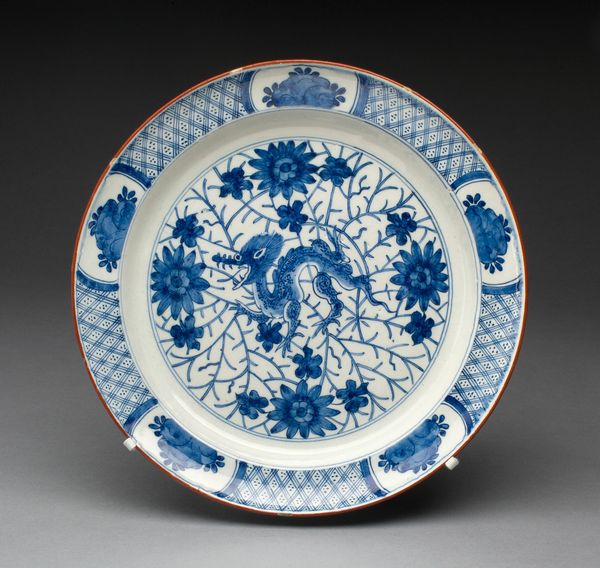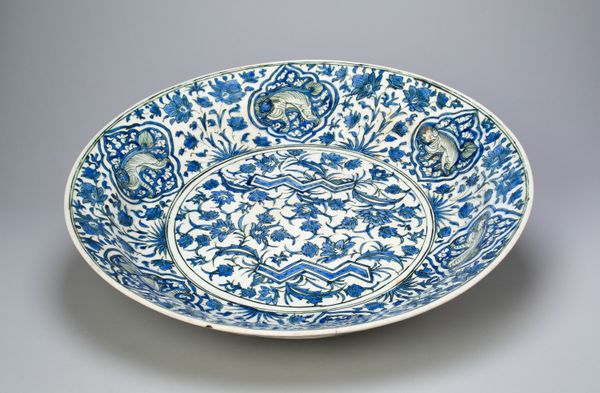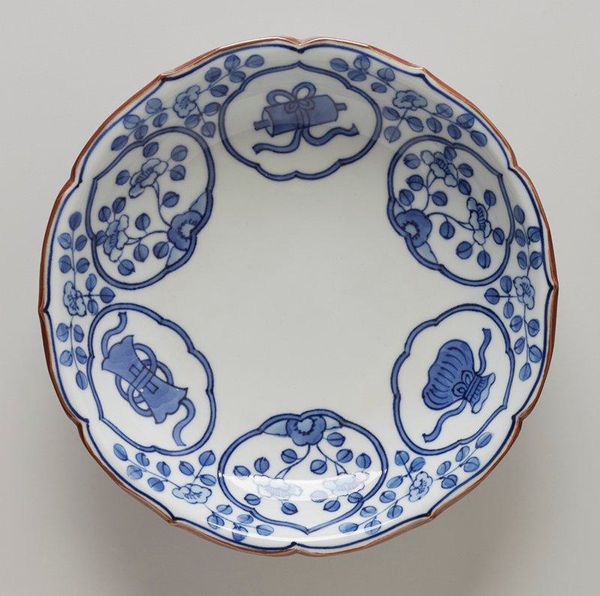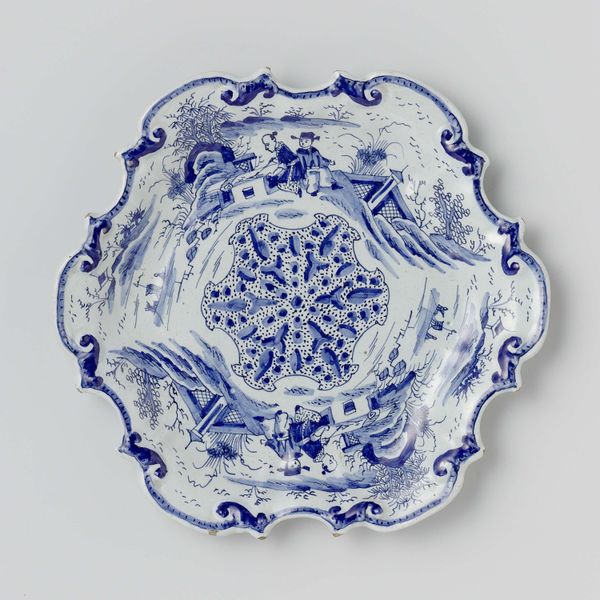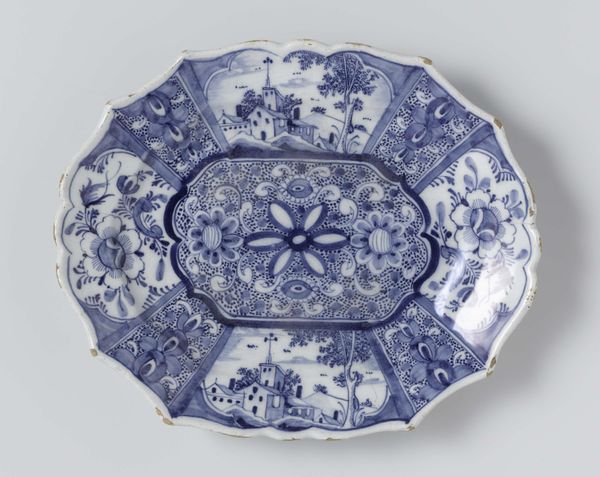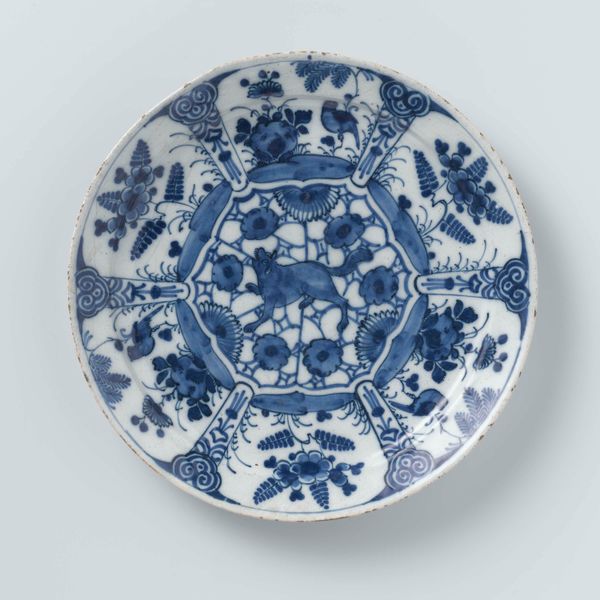
Dimensions: Diameter: 12 1/8 in. (30.8 cm)
Copyright: Public Domain
Editor: This exquisite dish, crafted sometime between 1745 and 1780 by De Porceleyne Bijl, showcases Dutch Delftware at its finest. Its floral motifs in cobalt blue are simply mesmerizing. How do you interpret the social context embedded within such a piece? Curator: The dish, beyond its surface appeal, speaks volumes about 18th-century global trade and power dynamics. Delftware, while aesthetically Dutch, was born out of the Dutch East India Company's trade with China. The floral patterns, seemingly innocuous, reflect the appropriation and reinterpretation of Eastern aesthetics for Western consumption. Consider the cultural implications: a Dutch company profiting immensely by selling their interpretation of Chinese designs. Editor: That’s a fascinating perspective. So, you see the beauty of the dish as intertwined with the complexities of colonialism? Curator: Precisely. This piece served as a signifier of status and wealth. Owning such decorative pieces meant participating in a globalized economy built on exploitation. Even the choice of floral patterns can be interrogated – what narratives are being woven, and whose voices are absent? Are the stories and craftmanship of the original craftspeople being acknowledged? Editor: It's almost like this beautiful object becomes a contested site of cultural exchange and power. Curator: Exactly. These objects can prompt critical reflections on the legacy of colonialism and how these historical relationships are subtly present even today. Doesn’t viewing art with such a historical context make it so much richer? Editor: It really does! Thank you for opening my eyes to this broader perspective. Curator: And thank you for asking these important questions, ones that connect past aesthetics to current issues.
Comments
No comments
Be the first to comment and join the conversation on the ultimate creative platform.
